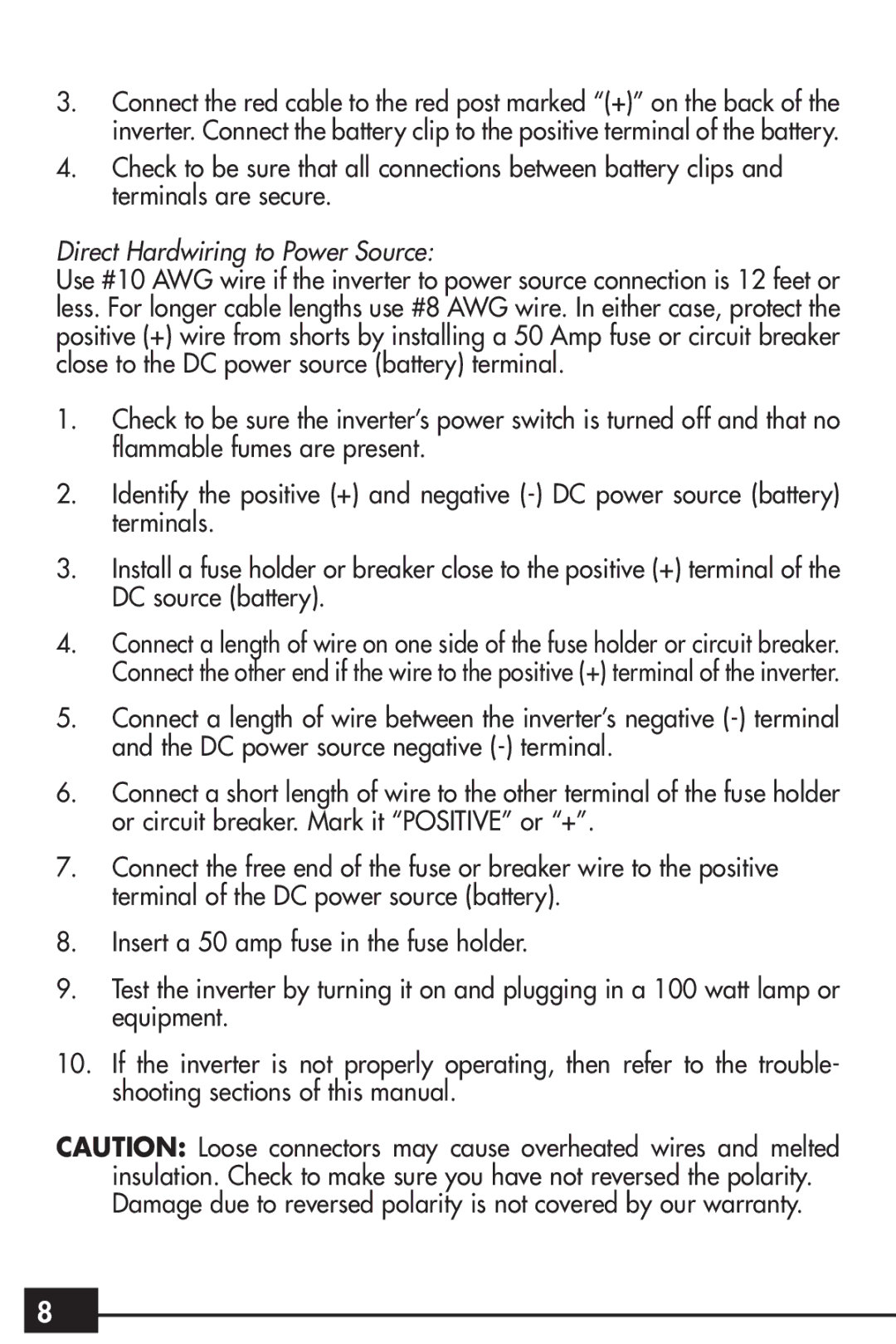3.Connect the red cable to the red post marked “(+)” on the back of the inverter. Connect the battery clip to the positive terminal of the battery.
4.Check to be sure that all connections between battery clips and terminals are secure.
Direct Hardwiring to Power Source:
Use #10 AWG wire if the inverter to power source connection is 12 feet or less. For longer cable lengths use #8 AWG wire. In either case, protect the positive (+) wire from shorts by installing a 50 Amp fuse or circuit breaker close to the DC power source (battery) terminal.
1.Check to be sure the inverter’s power switch is turned off and that no flammable fumes are present.
2.Identify the positive (+) and negative
3.Install a fuse holder or breaker close to the positive (+) terminal of the DC source (battery).
4.Connect a length of wire on one side of the fuse holder or circuit breaker. Connect the other end if the wire to the positive (+) terminal of the inverter.
5.Connect a length of wire between the inverter’s negative
6.Connect a short length of wire to the other terminal of the fuse holder or circuit breaker. Mark it “POSITIVE” or “+”.
7.Connect the free end of the fuse or breaker wire to the positive terminal of the DC power source (battery).
8.Insert a 50 amp fuse in the fuse holder.
9.Test the inverter by turning it on and plugging in a 100 watt lamp or equipment.
10.If the inverter is not properly operating, then refer to the trouble- shooting sections of this manual.
CAUTION: Loose connectors may cause overheated wires and melted insulation. Check to make sure you have not reversed the polarity. Damage due to reversed polarity is not covered by our warranty.
8
8
